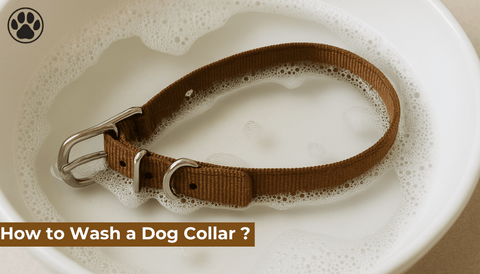
Can Lice Live on Dogs ?
of reading - words
Lice are a common concern for humans, especially in schools and crowded environments. But what about dogs? Can lice live on dogs, and if so, how do they affect them? In this guide, we will explore the types of lice that infest dogs, their symptoms, treatments, and ways to prevent an infestation.
Understanding Lice: Species-Specific Parasites
Lice are species-specific parasites, meaning they are adapted to survive on a particular host. There are two main types of lice:
-
Chewing lice (Mallophaga) – These feed on skin debris and secretions.
-
Sucking lice (Anoplura) – These feed on blood and can cause anemia in severe infestations.
Humans, dogs, and cats each have their own species of lice. Human lice cannot live on dogs, and dog lice cannot infest humans. If your dog has lice, you don’t need to worry about them spreading to you or your family.
What Kind of Lice Infest Dogs?
Dogs can be infested with their own species of lice, known as Trichodectes canis (chewing lice) and Linognathus setosus (sucking lice). These parasites attach to the fur and skin of dogs, causing discomfort and potential health issues.
How Do Dogs Get Lice?
Unlike fleas, lice do not jump from one host to another. They spread through direct contact or by sharing contaminated objects such as:
-
Grooming tools
-
Bedding
-
Collars
-
Dog toys
Lice infestations are more common in environments with poor hygiene and in dogs with weakened immune systems or dense fur.
Symptoms of Lice Infestation in Dogs
Lice infestations may not be immediately noticeable, but over time, symptoms become more evident. Look out for these signs:
-
Excessive scratching or biting – Lice cause irritation and itchiness.
-
Dry, rough, or matted fur – Lice feed on the skin, leading to poor coat health.
-
Visible lice or nits (eggs) on the fur – Nits appear as small white specks attached to hair shafts.
-
Restlessness and discomfort – Dogs may become more agitated due to constant itching.
-
Skin infections or sores – Scratching may lead to open wounds that can become infected.
-
Hair loss (Alopecia) – Severe infestations may cause patches of hair loss.
If you notice any of these symptoms, it’s crucial to inspect your dog closely and consult a veterinarian.
How to Treat Lice on Dogs
Treating dog lice infestations requires a multi-step approach to eliminate the parasites and prevent reinfestation. Here’s what you need to do:
Step 1: Use a Lice Treatment Shampoo
There are medicated shampoos specifically formulated to kill lice. Look for products containing insecticidal ingredients like pyrethrins, permethrin, or fipronil. Follow these steps:
-
Wet your dog thoroughly.
-
Apply the shampoo and lather well.
-
Leave the shampoo on for the recommended time.
-
Rinse thoroughly and dry your dog.
Step 2: Apply Topical or Oral Treatments
Veterinarians often recommend spot-on treatments or oral medications that kill lice and prevent future infestations. Some commonly used treatments include:
-
Selamectin (Revolution)
-
Fipronil (Frontline Plus)
-
Imidacloprid (Advantage II)
Step 3: Remove Nits and Lice Manually
Using a fine-toothed flea comb, carefully comb through your dog's fur to remove lice and nits. Dip the comb in soapy water to kill any lice present.
Step 4: Clean Your Dog’s Environment
Lice can survive on objects your dog uses, so thorough cleaning is essential:
-
Wash all bedding, collars, and dog toys in hot water.
-
Disinfect grooming tools.
-
Vacuum carpets and upholstery.
Step 5: Monitor and Repeat Treatment
Lice eggs may survive initial treatments, so it’s necessary to repeat treatments every 7-10 days until the infestation is completely gone.
How to Prevent Lice Infestations in Dogs
While lice infestations are not as common as flea or tick infestations, preventative measures can help protect your dog:
-
Regular grooming and bathing – Keeps your dog’s coat healthy and allows for early detection of parasites.
-
Avoid sharing grooming tools – Prevents the spread of lice between dogs.
-
Keep your dog's bedding and living area clean – Wash items regularly to eliminate any parasites.
-
Use preventive flea and lice treatments – Many flea preventatives also help against lice.
If you have multiple pets, separate the infected dog from others until the infestation is treated.
FAQs About Dog Lice
Can human lice live on dogs?
No, human lice cannot infest dogs. Lice are species-specific and cannot survive on different hosts.
Are lice in dogs contagious to other pets?
Yes, dog lice can spread to other dogs through direct contact or shared objects, but they do not infest cats or humans.
How long do lice live on a dog?
Lice can live for several weeks on a dog, but they need a host to survive. Without a host, they die within a few days.
Can lice kill a dog?
Lice infestations are usually not fatal but can cause severe discomfort, skin infections, and anemia in extreme cases.
Do natural remedies work for dog lice?
While some natural remedies (like neem oil and apple cider vinegar) may help repel lice, they are not as effective as medicated treatments.
How often should I check my dog for lice?
Regularly inspect your dog's fur, especially if they have been in contact with other animals or have persistent itching.
Conclusion
While lice can live on dogs, they are species-specific and do not affect humans. Lice infestations can cause discomfort, but with the right treatment and prevention strategies, you can keep your dog lice-free. If you suspect your dog has lice, act quickly with appropriate treatments and consult your veterinarian for guidance.
By staying proactive, grooming your pet regularly, and keeping their environment clean, you can effectively prevent and manage lice infestations in dogs.




